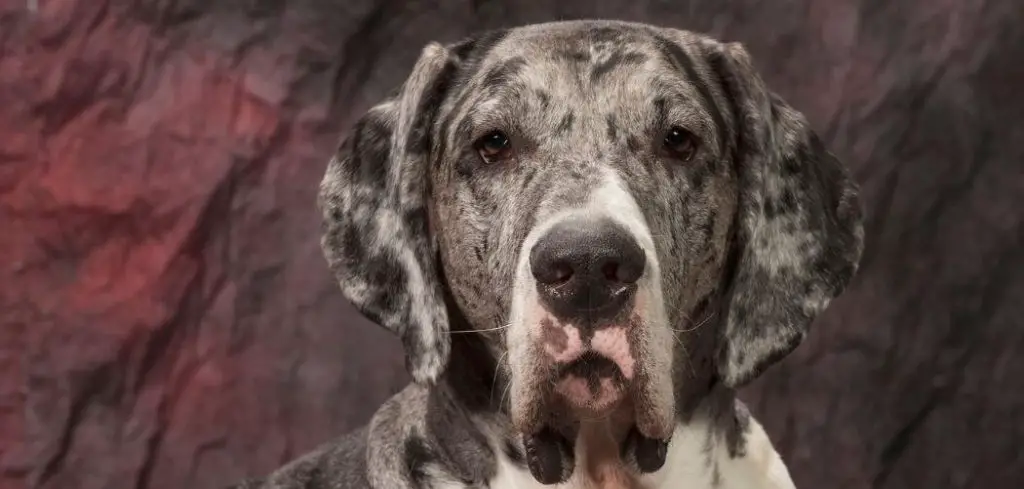When your dog sniffs their food but refuses to eat and then vomits, it’s a concerning combination that suggests more than just pickiness. This combination of signs often indicates an underlying health concern that shouldn’t be ignored.
We outline the common causes of a dog sniffing food but not eating and vomiting, what you can do at home, and when to seek veterinary help.
Dog Sniffing Food but Not Eating and Vomiting — Why It Happens
When a dog sniffs their food but refuses to eat and then vomits, this concerning pattern often points to gastrointestinal upset, infections, or systemic illness. Dogs may feel too nauseated or painful to eat, and vomiting can be the body’s response to internal inflammation or toxin exposure.
Conditions such as pancreatitis, gastritis, kidney disease, or even anxiety can lead to this behavior. It’s essential to consider the full picture, especially if other symptoms are present.

Common Causes of Dog Sniffing Food but Not Eating and Vomiting
Gastroenteritis
Gastroenteritis, or inflammation of the stomach and intestines, is a leading cause of both nausea and vomiting in dogs.
Your dog may sniff their food but avoid eating due to stomach discomfort or queasiness. Vomiting typically follows, and diarrhea may also occur.
This can be triggered by dietary indiscretion (like eating garbage), viral or bacterial infections, or stress.
While some cases resolve with rest, others require veterinary treatment to prevent dehydration.
Read more: Dog Shaking and Not Eating (When to worry)
Pancreatitis
Pancreatitis is an inflammation of the pancreas that can cause severe abdominal pain, nausea, and vomiting.
Dogs with pancreatitis often lose interest in food, may drool excessively, and will sometimes vomit after attempting to eat. They may also appear restless, bloated, or lethargic.
It’s a serious condition that may require hospitalization, IV fluids, and medication. Early intervention improves outcomes.
Kidney Disease
When a dog’s kidneys begin to fail, waste products build up in the bloodstream and affect appetite and digestion.
Affected dogs may approach food, seem interested, but back away due to nausea. Vomiting is a common symptom, along with weight loss, increased thirst, and bad breath.
Kidney disease is more common in older dogs, but it can occur at any age. Bloodwork and urine tests are needed to confirm the diagnosis.
Food Intolerance or Allergy
Food-related issues can cause chronic nausea and vomiting in sensitive dogs.
Dogs with food intolerances may sniff food but hesitate to eat due to learned discomfort. Vomiting may occur shortly after eating or even hours later.
These reactions can be triggered by specific proteins or ingredients like grains or dairy. Your vet may recommend a hypoallergenic or novel protein diet trial.
Ingestion of a Foreign Object
If your dog swallowed something that shouldn’t be in their system — like a toy, bone, or fabric — it can block the digestive tract.
This can cause a dog to stop eating suddenly and begin vomiting. Dogs may sniff food but instinctively avoid it due to discomfort or pain.
This is an emergency that may require imaging and surgery to remove the blockage.
Anxiety or Stress
Dogs experiencing anxiety or stress may show a lack of appetite and nausea.
Changes in routine, travel, boarding, or loud noises can lead to this behavior. These dogs may sniff food but avoid eating and may vomit from stress-related gastric upset.
Addressing the stressor and offering gentle reassurance can help, but persistent symptoms need vet attention to rule out physical illness.
What to Do If Your Dog Is Sniffing Food but Not Eating and Vomiting
First, remove food and water for a few hours to allow your dog’s stomach to rest.
Offer small amounts of water later, and if vomiting stops, you can try offering a bland diet like plain boiled chicken and rice.
Ensure your dog is resting in a calm, quiet environment. Avoid giving treats, table scraps, or medications unless prescribed.
Monitor closely for any changes in energy, stool, or hydration. If your dog improves within 24 hours, continue bland feeding for a day or two before reintroducing normal food.
However, if vomiting persists or your dog refuses food entirely, seek veterinary care.
When to Call or Visit Your Vet
Persistent vomiting (more than once in 24 hours) is a clear sign your dog needs evaluation.
If your dog becomes lethargic, shows signs of dehydration (sunken eyes, dry gums), or has blood in their vomit or stool, go to the vet immediately.
Signs of abdominal pain, bloating, or straining to vomit without success are medical emergencies.
If your dog hasn’t eaten in more than 24 hours and continues to vomit, professional help is essential to identify the underlying issue and begin treatment.
Read more: Dog Sniffing Food But Not Eating and Diarrhea (Why it happens)
Key Takeaway
If your dog is sniffing food but not eating and vomiting, don’t dismiss it as finicky behavior.
This combination often signals nausea, pain, or illness that requires attention. With timely care and observation, many dogs recover quickly — but never hesitate to contact your vet when in doubt.
Trust your instincts, act early, and give your pup the support they need to heal.
